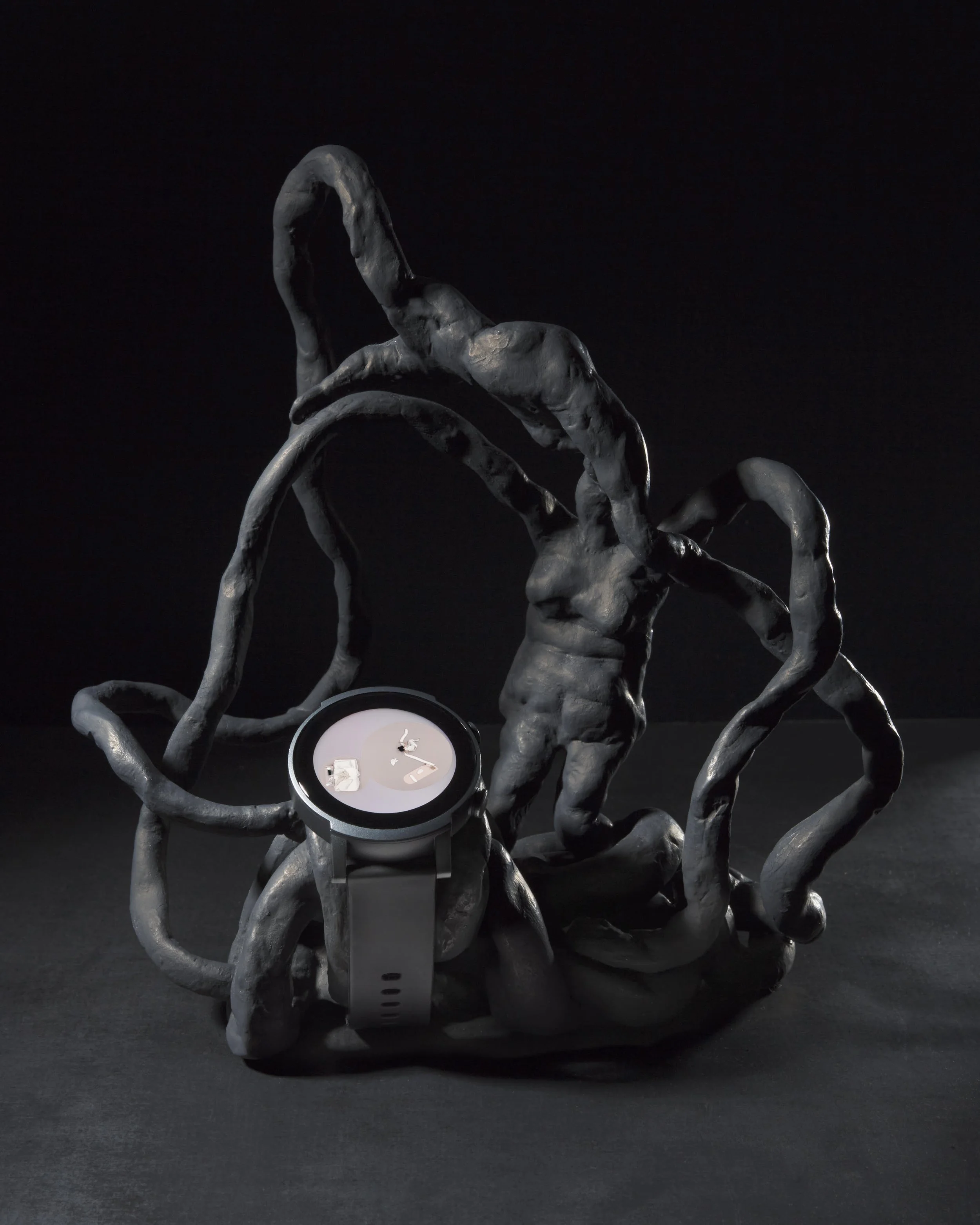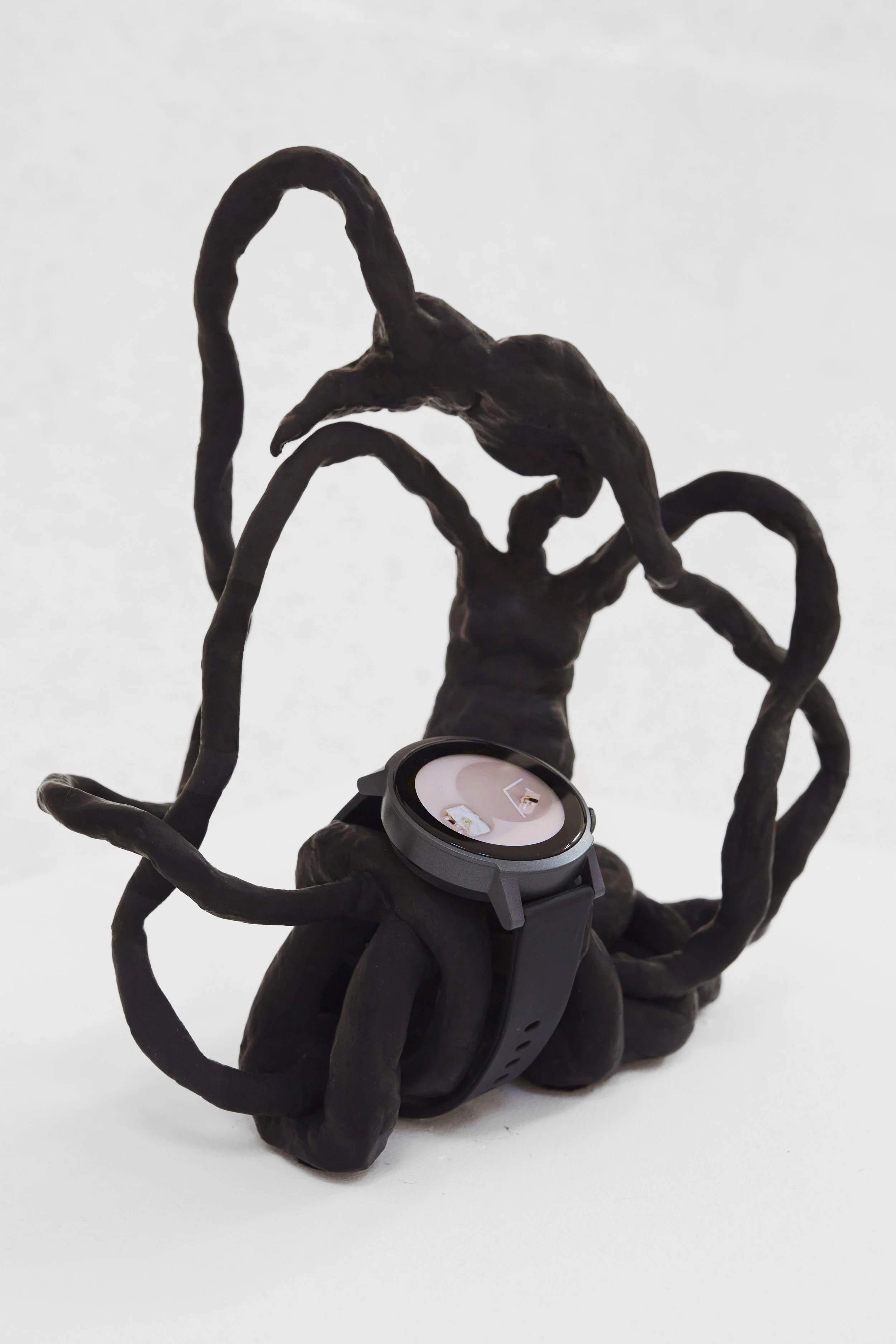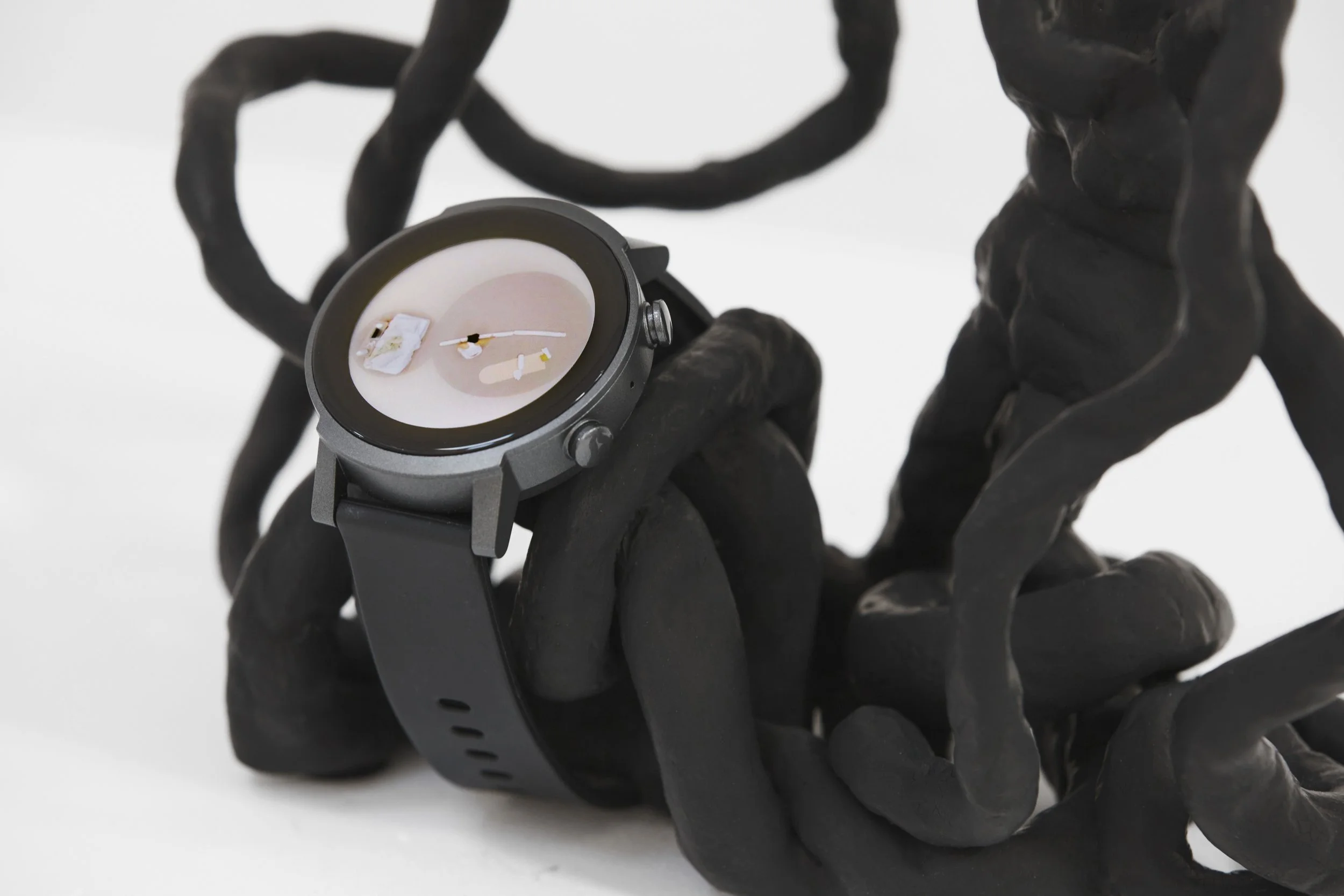CRIP TIME WATCH. 2025
Crip Time Watch is a wearable sculpture that reimagines a smartwatch as a site of performance, revealing the lived experience of chronic illness, labour, and endurance. On its screen plays a 12-hour performance: a woman with chronic illness, working remotely from home, physically pushes oversized clock hands across a vast floor. Her job is to physically mark each passing minute, sometimes with effort, sometimes in collapse. The video is synchronised with real time, aligning the action on screen with the viewer’s day.
The clock hands are made from sandbags: soft, but heavy. Scattered across the floor are objects of care and labour - a hot water bottle, yoga mat, foam roller, pills, laptop, and bed - tracing the quiet entanglement of medical self-management and the demands of work. From 7am to 7pm, she pushes forward. Her movement follows the arc of the day: pacing, anticipating pain, multitasking, pushing through, until her body gives out. At times, she retreats to a resting space - the Crip Time Pocket - and the clock stops. These pauses are a form of resistance. Time halts, drags, skips. It no longer obeys the rules of linear productivity.
The performance draws on real temporal strategies shared by chronically ill women navigating remote work - pacing, anticipating, pushing through - gathered in interviews by human geographer Dr. Elisabetta Crovara. The 12-hour structure was inspired by one participant’s non-consecutive workdays, allowing space for rest and medical care. I wrote the script by weaving these testimonies with my own experience. I am the woman in the video. Every push, pause, and collapse is mine.
Crip Time Watch subverts the logic of the smartwatch, a device built to optimise. These tools synchronise calendars, issue alerts, track steps and heart rate. They train us to measure our value through metrics: compliance, activities and speed. In this work, those functions are inverted. The watch becomes a witness, not to performance, but to the body’s limits, pain, and need for working, pausing, enduring. This proximity creates a quiet relationship between observer and performer: a witnessing of what productivity usually hides.
When not worn, the watch rests in a sculptural dock - the Bodies of the Hour. Two intertwined figures rise from tangled limbs, cradling the device like a companion. The form holds the intimacy and mutual support shaped by time lived by those with invisible illness. Even the watch, like the body, must be recharged daily. like a quiet ritual of care.
Rooted in feminist and disability-led perspectives, Crip Time Watch invites us to reconsider what it means to ‘function’, to endure, to participate and at what cost. It asks: What if watches didn’t track how fast we go, but honoured ‘how’ and ‘why’ we slow down?
Acknowledgments:
Collaboration Dr. Elisabetta Crovara & Jonathon Griggs
____________________________________________________________________________________
MATERIALS Android smartwatch, custom video app, air-dry clay with
archival polymer varnish , timber armature, USB charging cable
____________________________________________________________________________________
DIMENSIONS Height - 240mm ; Width - 240mm ; Depth - 140 mm
____________________________________________________________________________________




